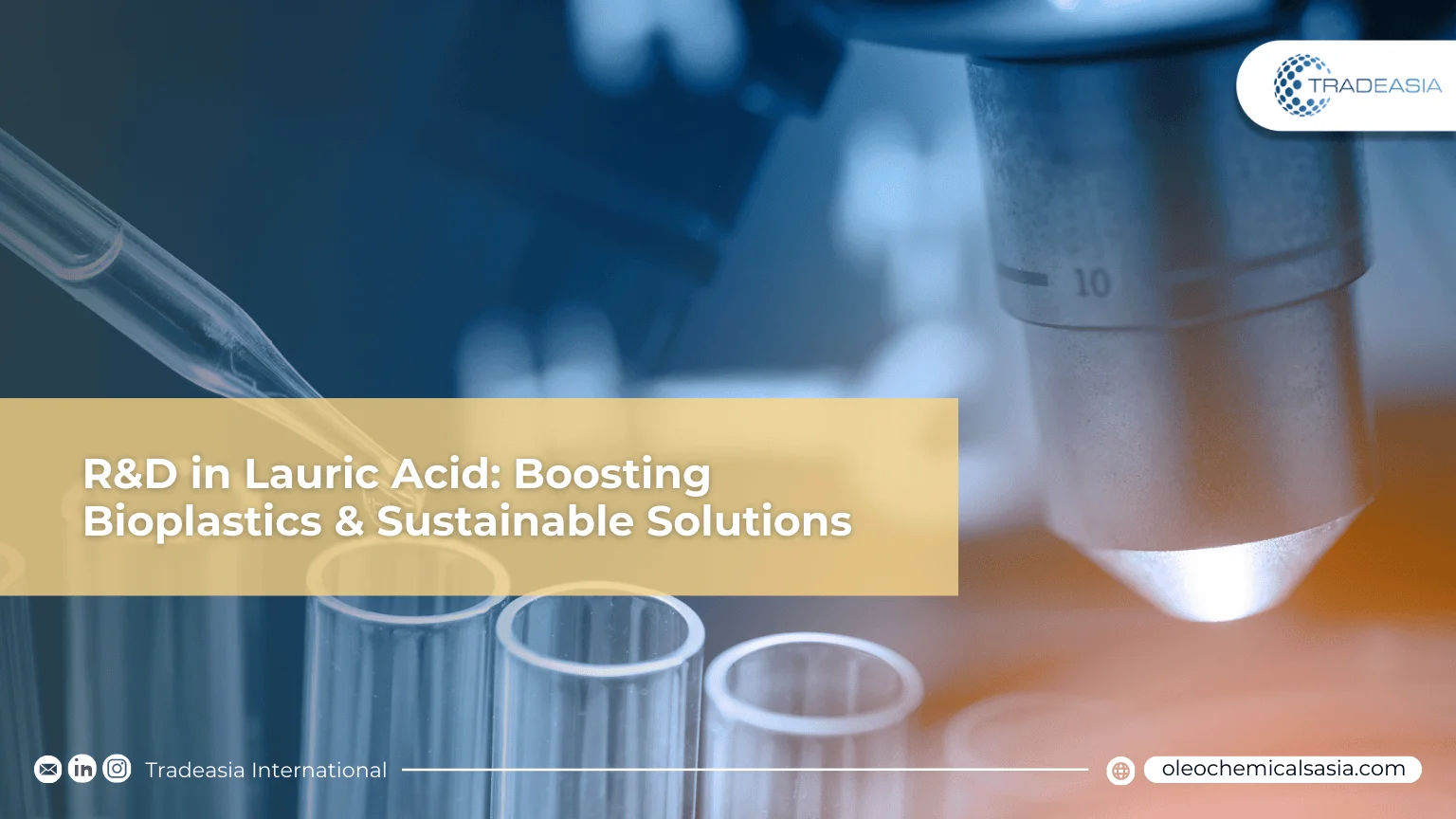Driving Market Growth Through Innovation in Oleochemicals
Research and development (R&D) in lauric acid is becoming a key catalyst for innovation across the bioplastics and oleochemical industries, particularly in the Asia-Pacific region. Lauric acid, primarily sourced from palm kernel oil, represents over 20% of the feedstock used in oleochemical production, making it indispensable for advancing eco-friendly applications. Its role as a renewable raw material positions it at the heart of the transition toward sustainable chemicals and next-generation materials.
The global oleochemicals market is forecasted to grow from USD 27.65 billion in 2025 to USD 37.25 billion by 2030, reflecting a steady CAGR of 6.14%. Asia-Pacific dominates this sector due to its integrated palm oil infrastructure, competitive production costs, and expanding demand for green solutions in personal care and industrial segments. Lauric acid serves not only as a building block for bio-based surfactants, detergents, and moisturizers but also as a crucial enabler in the development of bio-polymers that strengthen the region’s competitive edge.
At this juncture, supply chain reliability becomes just as important as innovation. As one industry leader notes, “sustainability without consistency is a promise unfulfilled.” Companies like Tradeasia International, specializing in palm-based oleochemicals, exemplify this principle by providing manufacturers with consistent, high-quality lauric acid. Their integrated supply model ensures that businesses can confidently pursue green chemistry innovations without compromising on material availability.
Bioplastics as the Next Growth Frontier
While oleochemicals demonstrate steady progress, the bioplastics sector is poised for even more rapid expansion. The market is projected to grow at a CAGR exceeding 15% between 2025 and 2030, with global value expected to nearly double from USD 48 billion in 2025 to USD 95 billion by 2030. This surge is largely driven by rising regulatory and consumer pressure to replace petrochemical plastics with biodegradable alternatives. Among these, polyhydroxyalkanoates (PHAs), derived from microbial fermentation of organic substrates including palm oil derivatives like lauric acid, stand out as a major focus of R&D.
Research initiatives are now targeting ways to make palm-derived PHAs and other bioplastics more scalable, cost-efficient, and biodegradable. Biotechnology and green chemistry are being combined to improve yields, reduce environmental impact, and align production with the global shift toward circular bioeconomy models. Across Asia-Pacific, collaborations between corporations and research institutions continue to strengthen lauric acid’s position as a cornerstone feedstock for sustainable materials in packaging, automotive, and consumer goods industries.
In summary, sustained R&D investment in lauric acid is accelerating the growth of both bioplastics and oleochemicals. With Asia-Pacific leading this transformation, the alignment of technology, market demand, and responsible sourcing is paving the way for lauric acid to remain at the forefront of sustainable innovation.
Sources:
-
Oleochemicals market size, share & growth research report (2025-2030) - Mordor Intelligence - https://www.mordorintelligence.com/industry-reports/oleochemicals-market
-
Bioplastics market size, growth, share & report analysis (2025-2030) - Mordor Intelligence - https://www.mordorintelligence.com/industry-reports/bioplastics-market
-
Palm Chemicals: Leading Industrial Chemicals Suppliers - https://www.palm-chemicals.com/

Leave a Comment